Ever wondered what going green really means? Dive into my story that everyone’s talking about.
In our delightful chat, Remmington Glorioso unraveled the story behind his journey into the solar industry, sharing insights that left both Karen and I intrigued and inspired. He opened up about his extensive experience in door-to-door sales, a journey that began with five years in home security, interlaced with a significant stint in the construction and electrical fields. This rich tapestry of experiences, Remmington explained, paved the way for his latest venture into solar energy.
Remmington’s transition to solar was not just a leap of faith; it was a decision ignited by conversations with a significant figure in his life, Nate Butterfield, his former mentor and now co-owner of Prolux. Nate’s insights into the shifting dynamics of Illinois’ energy costs opened Remmington’s eyes to the potential of solar power in the region.
Adding a personal touch to his story, Remmington shared how friends in the solar sector had encouraged him to join them for years. Yet, it took time for him to be convinced of the technology’s potential and its timing.
He candidly admitted his initial hesitations stemmed from uncertainties about the maturity of solar technology. However, as advancements continued to unfold, revealing significant improvements in efficiency and productivity, his perspective shifted.
Turning point for Remmington
The turning point for Remmington was recognizing the tangible benefits for homeowners, particularly the prospect of nearly halving their power costs without any upfront investment. This revelation not only marked his entry into the solar industry but also underscored his commitment to empowering homeowners through renewable energy, capturing his enthusiasm for making a meaningful impact on both the environment and people’s lives.
During our conversation, Remmington illuminated the specific advantages of adopting solar power through Proulx’s program, sharing details that resonated deeply with both Karen and me.
He emphasized the appealing aspect of no upfront costs for homeowners—a significant barrier lifted, making solar energy accessible to more people. This approach, he explained, differs markedly from traditional loans, as approval leads directly to installation without initial financial strain on the homeowner.
Remmington’s enthusiasm was palpable as he described the economic mechanics behind the program: instead of facing daunting initial investments, homeowners can transition smoothly to solar power, paying off their panels over time. The affordability of solar panels, consistently undercutting traditional power bills, stood out as a highlight.
This setup not only eliminates conventional electricity expenses but also allows homeowners to invest in their properties by building equity through solar panels.
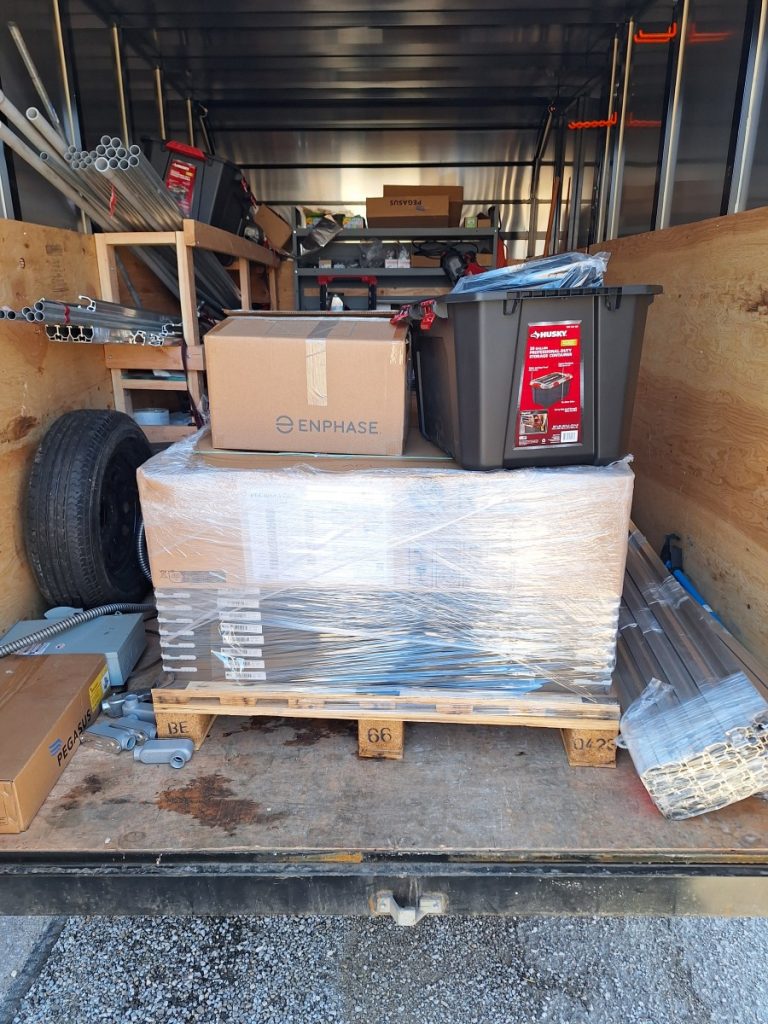
The concept of transforming a monthly expense into an investment opportunity struck a chord with us. Remmington painted a picture of a future where homeowners are not just saving money but are actively contributing to a greener planet.
This win-win scenario, merging financial benefits with environmental stewardship, underscored the holistic appeal of solar energy, making it not just a viable alternative, but a profoundly wise choice for homeowners.
Remmington continued to unravel the financial advantages of solar energy, specifically through the program offered by Prolux, which piqued Karen’s and my interest even further. He shared that many of his customers experience significant cost savings, with some seeing reductions as high as 50% or more in their energy bills. The actual savings, he noted, hinge on individual circumstances such as the existing electricity rates and the efficiency of the homeowner’s roof.
The unique structure of the program
What stood out in Remmington’s explanation was the unique structure of the program, designed inherently to benefit the homeowner from the outset. Unlike traditional models that involve hefty initial investments or loans, Prolux’s approach eliminates the daunting payback period.
Typically, the industry sees a break-even point around seven to eight years when relying on loans for solar installations. However, Remmington highlighted a key difference with their offering: homeowners begin to see savings virtually from the first month after installation once the panels become operational.
This approach aligns perfectly with the program’s prerequisite that it must save money for the homeowner, ensuring that the shift to solar is not only environmentally beneficial but also economically advantageous from day one. This compelling point underscored the practicality and immediacy of the benefits.
As we continued Remmington took a moment to delve into the environmental benefits of solar panels, a topic close to both Karen’s and my hearts. He highlighted a crucial, often overlooked fact: the majority of our power traditionally comes from less sustainable sources like coal and natural gas.
These methods, aside from being finite, necessitate mining and result in significant emissions, contributing to pollution and climate change.
However, Remmington pointed out the serene simplicity and profound impact of solar energy. The sunbathes our roofs in light every day without fail, a natural resource that’s both abundant and clean. By installing solar panels, homeowners can capture and convert this sunlight into electricity, bypassing the need for environmentally harmful energy sources.
This shift not only represents a move toward more sustainable living but also significantly reduces a household’s carbon footprint. Solar energy, as Remmington explained, offers a clean, inexhaustible power source that aligns with a growing need for environmental stewardship.
No environmental downside
There’s no environmental downside, he assured us, to harnessing the power of the sun— reflecting the potential for individual actions to contribute to a larger, global solution for energy sustainability.
The interesting comparison between wind turbines and solar panels is a topic that sparked curiosity in both Karen and me. He described the relationship between wind and solar energy as complementary, emphasizing that the effectiveness of each depends on the geographical and climatic conditions of a particular area.
Some regions may bask in abundant sunlight, making solar panels more suitable, while others might experience consistent winds, favoring the installation of wind turbines.
Remmington pointed out that while both energy sources require some degree of environmental alteration—such as land disruption for the installation of wind turbines—they share a common benefit: neither leaves a harmful residue nor causes significant long-term environmental damage.
He implied that the overall environmental impact is minimal compared to the benefits these renewable energy sources provide.

Remmington continued explaining the broader implications of solar energy beyond individual homes. He started with the economic benefits, explaining that when homeowners save money on their power bills due to solar energy, they have more disposable income. This extra spending money can circulate back into the local economy, stimulating growth and prosperity.
Through Remmington’s insights, Karen and I gained a deeper understanding of how solar energy contributes to a more sustainable and prosperous community, painting a picture of a future where economic and environmental benefits go hand in hand.
Remmington clarified that while true energy independence might be equated with being completely off the grid, the setup he discusses doesn’t necessarily achieve that level of autonomy. Instead, he views energy independence as the ability to comfortably meet one’s energy needs without undue stress over consumption.
He acknowledged that while the current solar panel installations do not typically include battery storage for complete off-grid living, they still significantly reduce reliance on traditional energy sources.
A more comfortable lifestyle
This shift allows homeowners to enjoy a more comfortable lifestyle, using the energy they need without the fear of exorbitant bills. Remmington’s perspective on energy independence reflects a balance between reducing dependency on the conventional power grid and enhancing the quality of life by alleviating the financial burden of energy costs.
This insight gave Karen and me a clearer understanding of the practical benefits of solar energy in promoting a more sustainable and worry-free approach to energy consumption.
Delving into the government incentives and support programs for solar panel installation is an area of significant interest. He specifically highlighted the Solar Renewable Energy Credit (SREC) program, a pivotal mechanism driving the affordability and accessibility of solar panels for homeowners.
Remmington explained how the SREC program embodies the government’s commitment to green energy, enabling companies like Prolux to offer solar panels with no upfront costs. The initiative works by granting renewable energy credits to homeowners, which utilities like Ameren can then use to meet their renewable energy quotas. Essentially, the energy produced by solar panels on residential roofs contributes to the utility’s green energy targets.
He stressed the importance of the Illinois Shines website as a resource for accurate and detailed information about the program. Illinois Shines facilitates the SREC program by providing incentives for solar projects, which include both individual residential setups and larger community solar endeavors.
These incentives, Remmington noted, are crucial for understanding the benefits and protections offered to consumers.
Remmington clarified that the renewable energy credits, which signify the environmental value of the renewable energy generated, play a critical role in the economics of solar energy. By tracking the amount of renewable energy fed into the grid from homeowners’ systems, these credits allow for a tangible measurement of environmental contribution.
He emphasized that while the incentives are initially paid to approved vendors like Prolux, the savings ultimately benefit the customers, enabling the installation of solar systems without upfront costs. This arrangement, as Remmington pointed out, reflects a long-term investment in sustainable energy, with the generated power contributing to the grid over many years.
An exceptional opportunity
Remmington expressed his belief in the exceptional opportunity presented by the SREC program in Illinois, especially as a new market, which tends to offer particularly favorable conditions for consumers in the early stages.
His detailed explanation gave us a clearer understanding of the intricate relationship between government incentives, renewable energy, and individual benefits, framing Illinois as an attractive locale for adopting solar energy.
We touched upon the specifics of Ameren’s net metering program and its current status. He shared that despite initial expectations for a deadline in December, the program has been extended through the rest of the year. This extension indicates that Ameren has not yet reached the required threshold for renewable energy production.
Remmington’s update implies that opportunities for installing solar panels under the favorable conditions of the net metering program continue to be available, which is encouraging news for homeowners considering the transition to solar energy.
The extension of the deadline offers additional time for individuals to participate in the program, benefiting from the incentives while contributing to the region’s renewable energy goals.
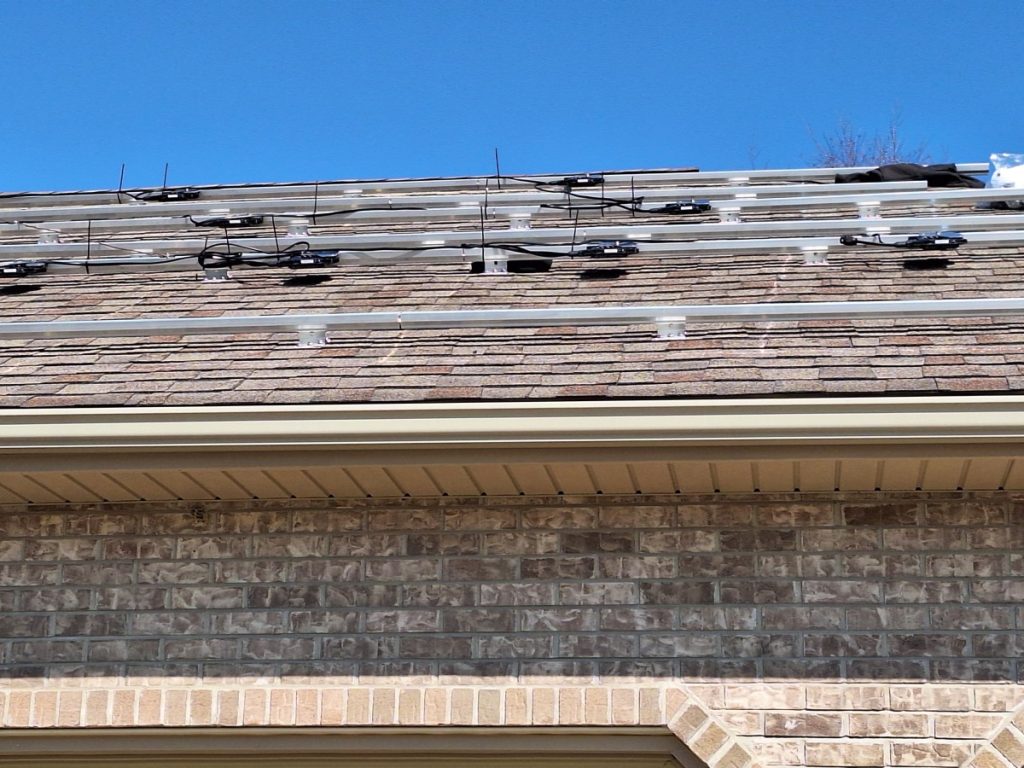
This piece of information highlighted the dynamic nature of energy programs and the importance of staying informed about changes and deadlines. Remmington’s insight into the current state of the net metering program underlines the ongoing need for renewable energy adoption and the role individual homeowners can play in meeting these broader environmental targets.
Remmington provided valuable insights into the maintenance and longevity of solar panels. He clarified that solar panels require minimal maintenance, primarily concerning cleanliness to ensure optimal performance. In regions experiencing prolonged dry spells, dust accumulation might hinder the panels’ efficiency by blocking UV rays.
The solution, he suggested, is as simple as spraying them down with a hose—a low-effort task to maintain energy production levels.
He shared reassuring information: solar panels come with a 25-year warranty, reflecting the manufacturers’ confidence in their durability. While he noted a natural, gradual decrease in efficiency—typically around or less than 1% per year—the reduction is minimal, ensuring that the panels remain highly productive over time. By the end of the warranty period, they still generate a significant amount of energy, making them a worthwhile long-term investment.
Technological advancements in solar panels
In our discussion, Remmington addressed the technological advancements in solar panels since Karen and I last considered them, providing particularly relevant insights as we consider installing solar panels. He emphasized the significant improvements in panel efficiency, which is the measure of how effectively solar panels convert sunlight into electricity.
This advancement means that modern panels can harness and transform more sunlight into usable energy than those installed years ago.
Another major development Remmington highlighted was the shift from central inverters to micro inverters. He explained that the system we had previously, with a single large inverter, had a notable drawback: if one panel malfunctioned, it could halt the entire system’s energy production. This would cause inconvenience and result in lost energy production until the issue was resolved.
In contrast, systems equipped with micro inverters, which are now becoming standard, offer a significant advantage. Each panel operates independently, thanks to its own microinverter.
If one panel encounters an issue, the rest of the system continues to function unaffected, ensuring continuous energy production. This advancement enhances reliability and efficiency and minimizes the impact of any single panel’s downtime on the overall system.
These technological advancements in solar energy systems provided us with a clearer understanding of the benefits and what to look for in our new setup. He emphasized the significant improvements in panel efficiency, which is the measure of how effectively solar panels convert sunlight into electricity. This advancement means that modern panels can harness and transform more sunlight into usable energy than those installed years ago.
In our enlightening conversation, Remmington introduced us to the modern capabilities for monitoring solar panel performance. He explained that advancements in solar technology have extended beyond the panels and inverters to include user-friendly monitoring systems. Specifically, he mentioned the Enlighten app by Enphase, the manufacturer of the inverter systems.
This app represents a significant leap forward in managing and understanding solar energy production. Remmington described how it allows homeowners to view the layout of their solar panels and monitor real-time production data.
The interface of the app provides a visual representation of how each panel is performing, indicating which areas are receiving more sunlight and which might be underperforming.
For example, panels producing lower energy levels would be visibly different, alerting the homeowner to potential issues. This feature is crucial for maintaining optimal performance, as it enables early detection of problems, allowing for timely intervention and repairs.
Backed by a 25-year warranty
Furthermore, Remmington pointed out that each panel is backed by a 25-year warranty, covering not just performance but also any damage, ensuring peace of mind for homeowners.
The ability to track daily and lifetime production data for each panel offers a detailed insight into the system’s effectiveness and the environmental impact of one’s energy consumption. This technological advancement, as Remmington shared, not only empowers homeowners to maximize their solar investment but also enhances the overall experience by providing transparency and control over their renewable energy production.
Remmington shared his vision for the future of solar energy. He predicted that solar panels would continue to evolve in terms of efficiency, allowing homeowners to harness more energy from a smaller area on their roofs.
This improvement would mean that future solar installations could provide the same or greater energy output while occupying less space, which is an exciting prospect for urban and space-limited environments.
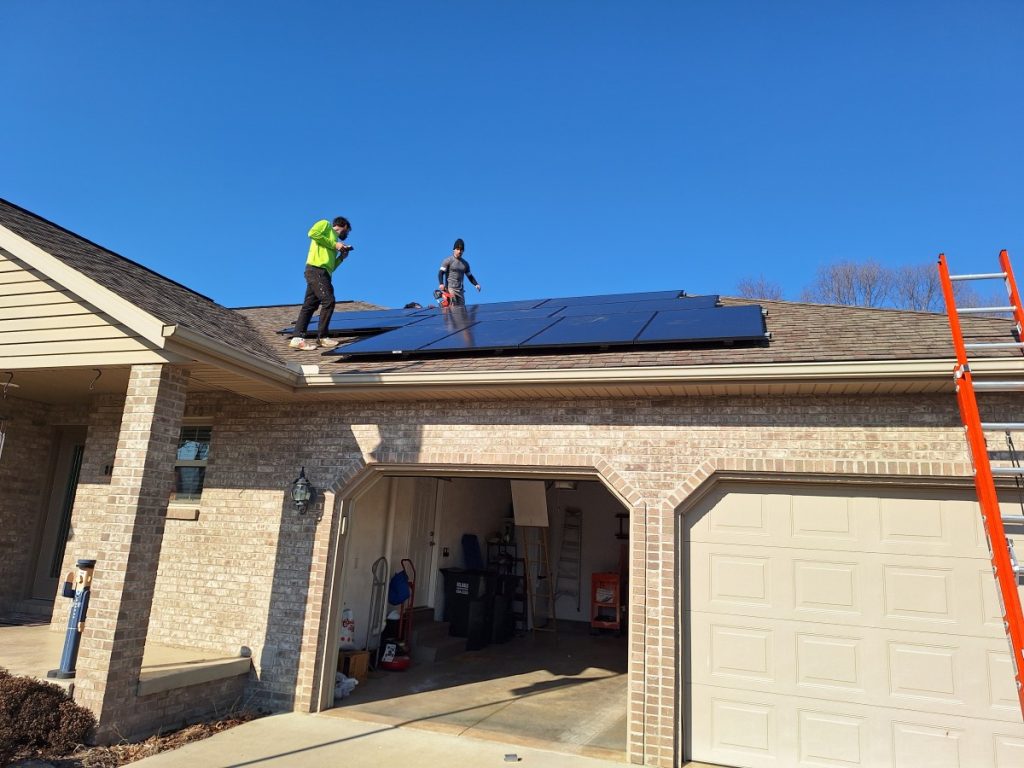
Moreover, Remmington touched upon the aesthetic evolution of solar technology. He mentioned the development of solar tiles, an innovative solution that integrates the functionality of solar panels with the traditional appearance of tile roofing.
This option represents a significant advancement for homeowners concerned about the aesthetic impact of conventional panels on their homes. However, he noted the current high cost of solar tiles as a barrier to widespread adoption.
He expressed optimism that, as with many new technologies, prices for solar tiles and highly efficient panels would decrease over time, making these options more accessible to a broader range of homeowners. This potential shift could lead to a future where solar energy is not only more prevalent due to its efficiency and environmental benefits but also more integrated into the design and architecture of homes.
Greater efficiency
The future of solar energy is a path toward greater efficiency, aesthetic appeal, and accessibility, painting a promising picture for the next decade of solar innovation. This perspective left us excited about the advancements we might see, and the increasing role solar energy could play in our lives and communities.
As we began to wrap up our discussion, Remmington shared some final thoughts. He reflected on the growing momentum behind solar energy adoption in Illinois, propelled by rising energy costs and substantial government support for green initiatives. His observations suggest an optimistic future where solar becomes a mainstream energy source, transitioning from a niche alternative to a standard in residential energy.
His speculation that, in the next decade or so, more households will have solar installations than not underscores a significant shift in public perception and energy consumption patterns.
This transition speaks to a broader societal move towards sustainability and environmental responsibility, driven by both economic incentives and a growing awareness of the impacts of traditional energy sources.
His parting words left us with a sense of inevitability and hope for the future of solar energy, emphasizing that the movement towards cleaner, renewable sources is not just a trend but a lasting change in how we power our lives. This perspective encourages homeowners like Karen and I to consider not just the immediate benefits of solar energy, but also the role we play in a larger, evolving energy landscape.
He expanded on the economic dynamics between traditional utility costs and solar energy investment. Noting a general trend in the energy sector: power and utility costs typically double every 15 years. This pattern has been relatively stable for decades, but recent trends indicate an acceleration in the rate at which utility costs are increasing across the country.
It’s important to seize the moment with available incentives and programs for solar energy. He pointed out that those who transition to solar now, taking advantage of current incentives, will find themselves in a more advantageous financial position than those who continue relying on traditional utility companies like Ameren.
As utility rates climb, the gap between the cost of conventional electricity and the fixed, lower cost associated with solar energy will widen, resulting in significant long-term savings for solar users.
As utility rates climb
Remmington pointed out that while power costs could potentially double in the coming years due to various market and environmental factors, those who have installed solar systems would largely be insulated from these increases. This protection from rising costs hinges on the initial design of the solar system to meet the household’s energy needs.
As long as energy consumption remains consistent with the system’s design, solar users can expect their electricity costs to remain stable and significantly lower than those without solar over time.

Remmington’s closing comments left Karen and I with a clear sense of the broader implications of our decision to go solar, reinforcing the notion that early investment in solar energy is not only a wise choice for our hou16sehold but also a forward-thinking step towards greater energy independence and financial stability.
Wrap up
The world is moving more and more to electric. Our cars are becoming electric-based. Solar panels are popping up all around our area. We were solar panel pioneers when we lived in North Aurora. We were able to cut our electric bills in half as a result of putting solar panels up. We would have saved more if the city would have let us put up more panels.
We’re not the first ones to install solar panels in our neighborhood. But we’re still ahead of the curve. We’ll be monitoring our electrical production to see what kind of savings we’ll receive. The electric utility can raise their rates, but we’ll be free and clear of what they want to charge everyone else.
We hope you are enjoying these articles and are willing to continue to follow along as we share our adventures of learning about life in southern Illinois, This is an exciting area and we are so happy to be part of this area. Our lives are being fulfilled by the people we are meeting. Bruce & Karen.
This website is a participant in the Amazon Services LLC Associates Program, an affiliate advertising program designed to provide a means for sites to earn advertising fees by advertising and linking to Amazon.com and affiliated sites. As an Amazon Associate, I earn from qualifying purchases.
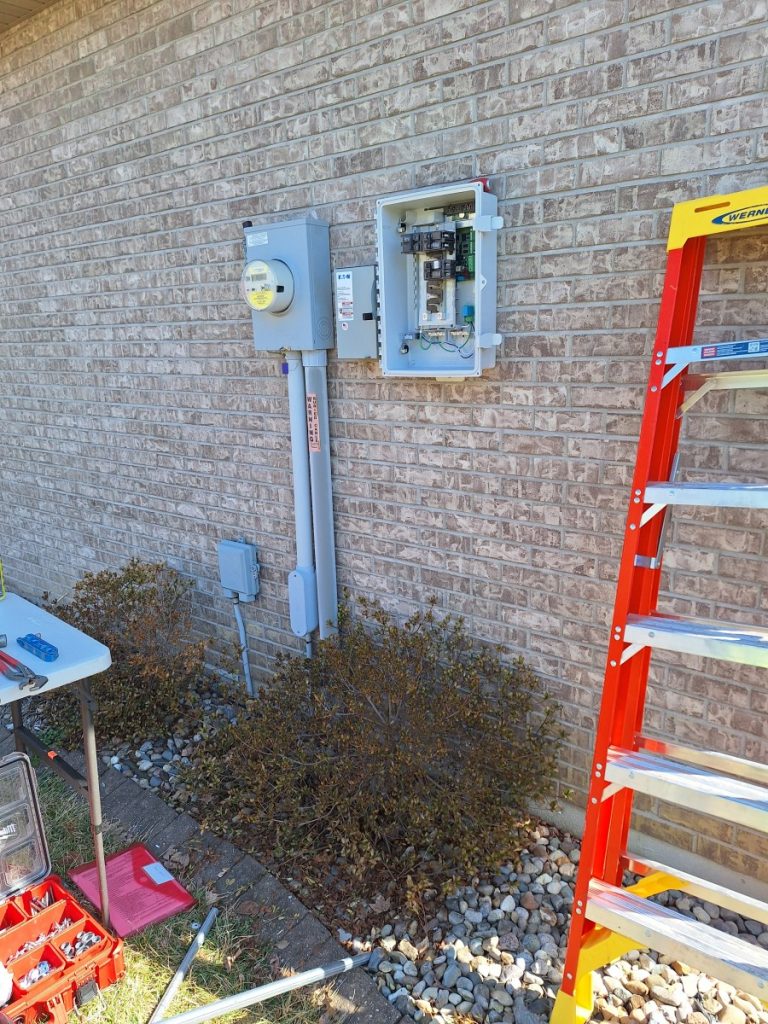
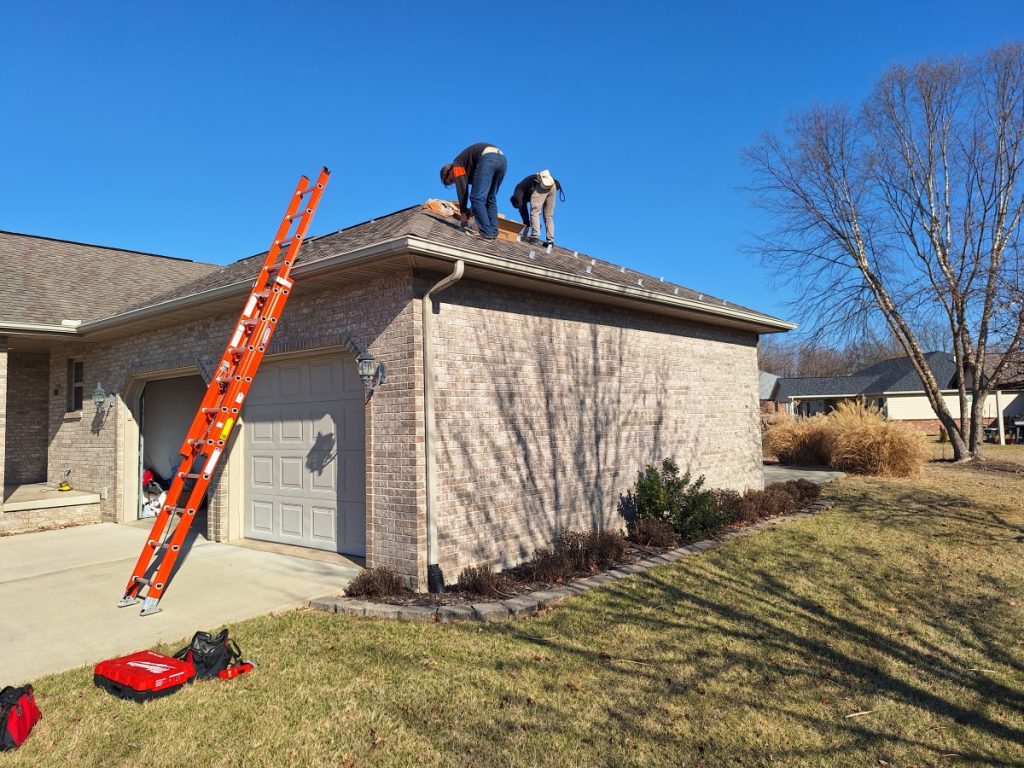
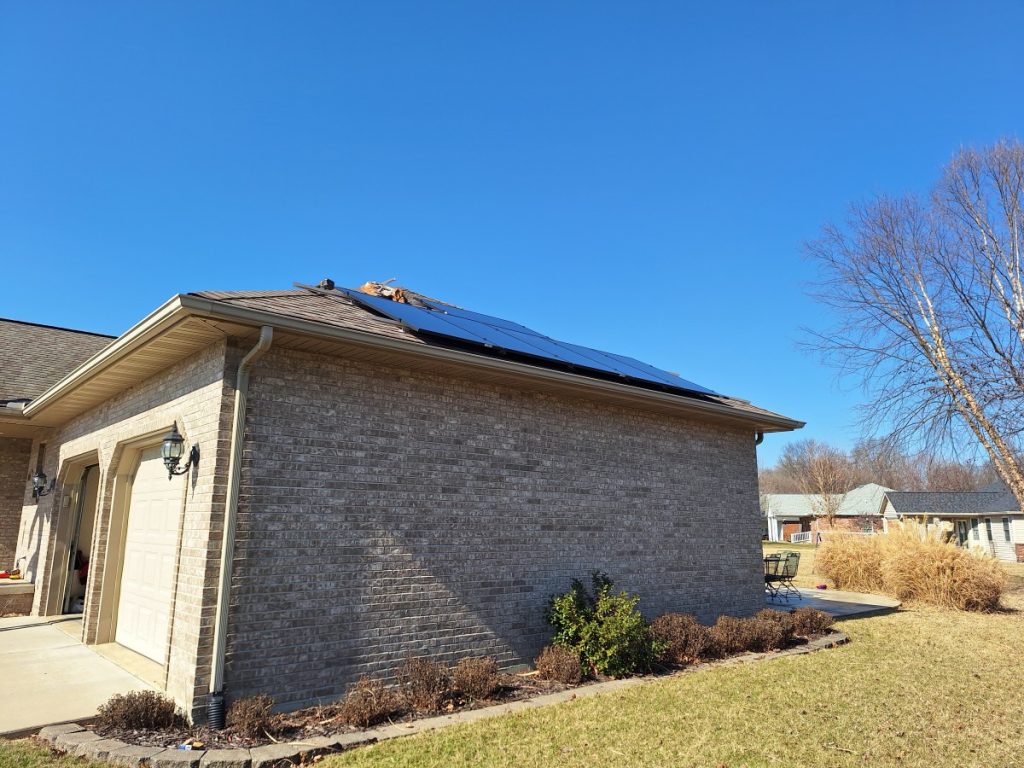
We’re Bruce and Karen Carlson. We recently moved to the Metro East area of Illinois. This area is east of St. Louis from the Mississippi River north to Alton, east to Carlyle, back south to Waterloo and the Mississippi River, finally north to Columbia. The center is Fairview Heights, Swansea, Belleville, Shiloh, and O'Fallon. Not to be forgotten is Southern Illinois University (SIU) in Edwardsville. It’s a whole new world out there. Our goal with this website is to share our exploration of the Metro East area. As we find businesses and services we use in our daily lives, we’ll share how these businesses and services have helped make our lives better and easier to live.
We’re calling our move to the Metro East area retirement, but we’re not quite sure what that means. By sharing our story with you, we hope you too will gain a better sense of what the Metro East area has to offer and how their businesses and services can improve your lives and build a better community.


